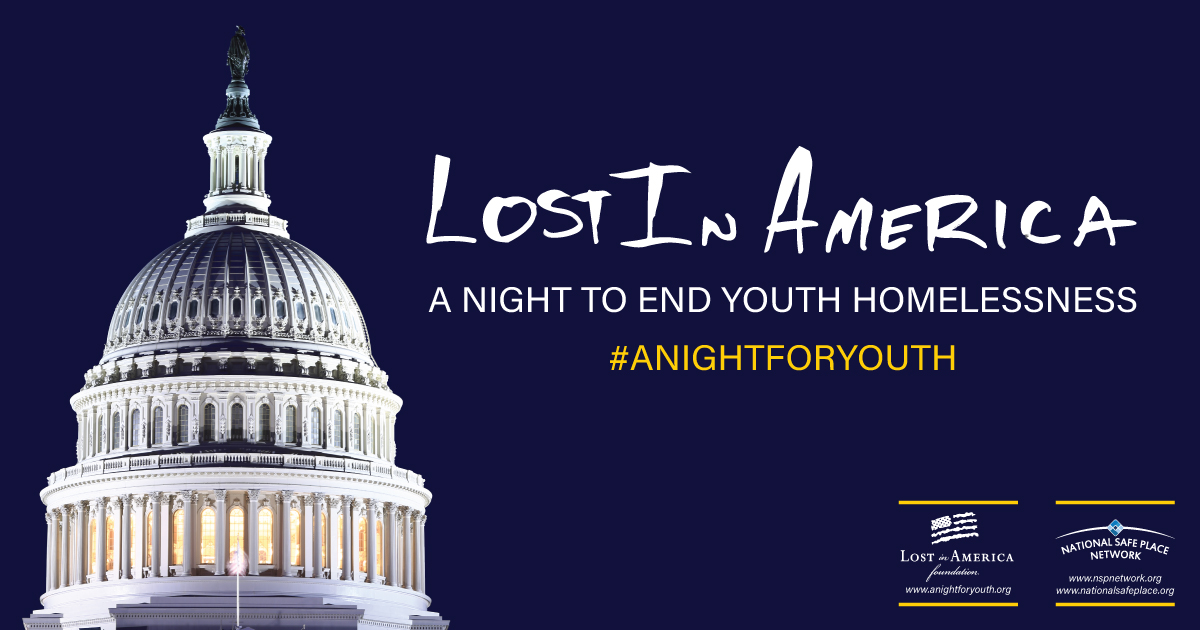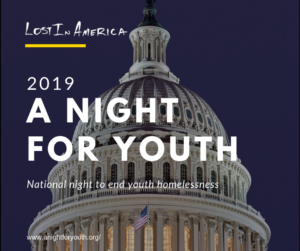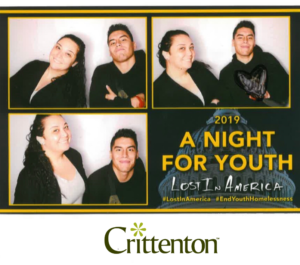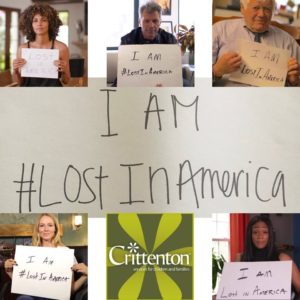
Crittenton Partners with National Runaway Safeline for National Homeless and Runaway Youth Prevention Month
Crittenton works with youth and young adults who have experienced homelessness, foster care, and the juvenile justice systems at one point in their lives. Therefore, when we heard that the National Runaway Safeline needed partners to help spread awareness during National Homeless and Runaway Youth Prevention Month it was a no brainer to do our part and help. We proudly became one of National Runaway Safeline’s social media partners by helping to create a greater understanding of this dire issue to everyone who visited our social media channels recently.
 Every November, organizations that directly work with system-involved or homeless youth know how important this yearly observance is for our respective missions, and we collectively do our part to help provide clarity on the issue, de-stigmatize homeless or system-involved youth and provide ideas on how the average citizen can help.
Every November, organizations that directly work with system-involved or homeless youth know how important this yearly observance is for our respective missions, and we collectively do our part to help provide clarity on the issue, de-stigmatize homeless or system-involved youth and provide ideas on how the average citizen can help.
Why do organizations like Crittenton, the California Coalition for Youth, or National Runaway Safeline need the community’s help?
Here’s just a sample of youth homelessness data that helps illustrate the urgent and compelling need for everyone in the community to care about why young people end up homeless or in the ‘system’ to begin with, and why youth need our help.
Top 10 Facts Why Youth End Up Homeless:
- More than 14,000 youth in California between the ages of 12-24 have experienced homelessness in 2018, which represents 34% of the country’s total. This is because they are running away from potentially abusive situations or end up aging out of the “system” with no safety net to turn to. Please keep in mind this fact only adds to the seriousness of California’s already looming homelessness crisis!
- 1 in 30 youth ages 13-17 experience homelessness every year (again, oftentimes due to neglect/abuse or they’ve been rejected by their biological family, or their family is experiencing housing instability due to the high costs of rent in states like California).
- 277,000 K-12 students, in California, experienced homelessness in 2018 (often due to housing instability).
- LGBTQ+ youth have a 120% higher risk of experiencing homelessness (oftentimes due to their family rejecting them because of their identity).
- 1-10 youth ages 18-25 experience homelessness every year (typically transitional age youth or former foster youth tend to be at higher risk of homelessness as they age out of the system because lack of a safety net).
- 51.1% of youth experiencing homelessness in the US are youth of color. Youth of color are disproportionately represented in the ‘system’, which can lead to higher rates of homelessness as teens or young adults.
- 88% of youth report experiencing physical, emotional, or sexual abuse prior to becoming homeless (this statistic is the intersection in which many youths start in the ‘system’ to begin with).
- 39% of youth experiencing homelessness report that they are not using government assistance of any kind (this is why nonprofits who work with homeless youth need more funding to help).
- Youth experiencing homelessness are five times more likely than their peers to become homeless adults (thus is why organizations working with system-involved youth need your support).
- Among chronically homeless adults 50% were homeless during the ages of 18-25 (this is why organizations working with Transitional Age Youth need your help to prevent homelessness to continue to be a chronic issue).
When it comes to youth homelessness it’s not because youth want to be homeless, but rather, there is oftentimes no other choice or resources available. However, know that not all is lost and that anyone can help youth in similar circumstances.

Preventing youth homelessness is plausible but it does take an entire community to care enough to do something about it. We can collectively curtail and change these statistics by implementing preventable measures to begin with as we interact with youth already in the ‘system’ or those already living on the streets. There are ways we can all help break the cycle of youth homelessness whether it be by starting with small steps or committing to be actively involved in more long-term solutions.
Top Ways You Can Help Prevent Youth Homelessness:
Immediate Impact:
- If you want to donate we recommend that you donate to those organizations locally or nationwide that work directly with system-involved youth (foster care or juvenile justice) or those that work with homeless youth living on the streets. If you’d like to help organizations working with homeless youth for example or those fleeing dangerous family situations we recommend California Coalition for Youth or National Runaway Safeline as top choices. These nonprofits have established hotlines and a network of partners that can help youth when a call to their hotlines is made. To organizations like these every caller in need of help, and every donation made truly matters.
- Support and advocate organizations that work with youth in crisis or that work with youth involved in the ‘system’. Advocating will cost nothing and most organizations welcome the opportunity to partner with you in some capacity. Either you elect to support by reaching out to political offices in support of the organization and its mission, or you can create speaking engagement opportunities in your churches or social clubs to educate your network of the issue of homeless and runaway youth. These actions help by spreading more awareness on this issue! The more people are aware and are motivated to get involved with these organizations the more we all help prevent youth homelessness.
- Spread the word of organizations that need help preventing youth homelessness or help to stop further child abuse by supporting their social media channels. Retweet them, share the organizational needs, or make others in your network aware they exist! This is all helpful for organizations that don’t have much funding or staffing to support a full-time publicity operation. Being a social media ambassador for a worthy organization is another great option to help without costing a dime.
Long-Term Commitment:
- Volunteer or mentor in an organization that works with homeless or system-involved youth. Of all the young people should consider inspiring or being a cheerleader for, these would be the youth to prioritize. Why, you may ask? Because they often don’t have any biological family members to turn to for support. These youth may not have anyone that cares to cheer at a school recital and no one that may care to help with a homework assignment. If you are willing to go to the next level to help by becoming a mentor or volunteer in this capacity it’s highly welcomed by organizations that need this support.
- Partnering with organizations to create more job opportunities, educational/professional development opportunities, or help with housing support is helpful. Especially for organizations that work with transitional age youth or former foster care youth (ages 18-25) these kinds of pro bono partnerships/initiatives are crucial to curtail the homelessness rates among former foster youth. Check our Crittenton’s Stepping Stones Program to learn more about transitional age youth.
- Among the biggest need to help abused or homeless youth rebuild their lives is recruiting and finding supportive and compassionate foster families. With roughly 400,000 youth in America’s foster care system finding families willing to help is a daunting task but one that can tremendously help youth not feel as if there only options is running away into the streets. The key here is finding loving families that care enough to take part of this mission. Not everyone is cut out for this – we know, however, for those that would like to help teen foster youth find a forever family please connect with Crittenton’s Foster Care Program as soon as possible!

For these reasons, it’s why Crittenton cares enough and is doing our part to help curtail further abuse, homelessness or exploitation of every youth we work with throughout the year. Our partners in service are important to us and what they do is respected by all of us at Crittenton. We salute you and everything you do on behalf of system-involved or homeless youth.
We’d also like to give a special thank you to the film director and producers of the latest documentary about the youth homelessness crisis in the US called, “Lost in America” for their gracious invitation to their recent event.
Our teen girls from Crittenton’s Residential Treatment Center were invited and treated to a real Hollywood premiere with the director of the film and other notables including Congresswoman Karen Bass and Actress Rosario Dawson discussing this issue further to the audience. Our girls reported that they related to the youth in the film, as they too have experienced much in their young lives. We are proud that they took part in making ‘survival kits’ for the homeless at the film event, and gave them out to homeless individuals as both our kids and staff walked back to their cars after the event ended.
We encourage every supporter to watch this documentary when you get the chance. The film does a great job in providing more clarity to this ongoing child welfare issue.
###
Crittenton Services for Children and Families of Southern California (CSCF) is a non-profit social services agency whose mission is to heal the wounds of abuse and neglect; strengthen families; and help troubled adolescents reach their full potential. Established and incorporated in 1966 Crittenton has a highly trained workforce operating 24 hours a day / 7 days a week providing comprehensive mental health services, shelter care, and other support services to the clients in our care. We provide a full array of short-term residential services, in-home, community-based programming, wraparound family services, outpatient mental health, transitional age youth programming, foster care, and adoption services with a service planning area throughout Southern California that covers Orange, Los Angeles, San Bernardino, and Riverside Counties.
Visit www.crittentonsocal.org to learn more about our programs and connect with us on Facebook, Twitter, YouTube, Instagram, LinkedIn, and Flickr

